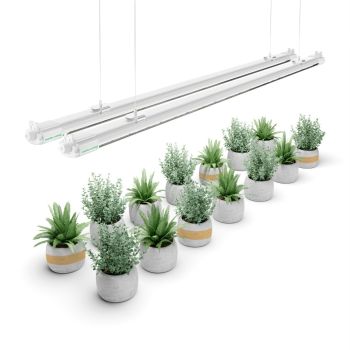
Welcome to the fascinating world of Monstera deliciosa, the 'Swiss cheese plant' that's taking the indoor gardening community by storm! If you've recently acquired a Monstera—or are considering adding one to your indoor garden—you might be asking yourself, 'How do I keep this tropical beauty healthy and happy?'
This comprehensive guide will delve into everything you need to know about monstera deliciosa care, from watering routines and lighting conditions to common mistakes you'll want to avoid. Let's ensure that your Monstera becomes not just a household decoration, but a thriving member of your indoor plant family!
What Is Monstera Deliciosa?

Monstera deliciosa plant is a species of flowering plant native to tropical forests of southern Mexico, south to Panama. It has gained widespread popularity as an indoor houseplant and is commonly known as the "Swiss cheese plant" due to the unique, fenestrated leaves it produces. These leaves often have natural holes or cuts, giving them a distinctive and attractive appearance.
"Monstera" is derived from the Latin word for "monstrous," an allusion to the large size that this plant can grow to, especially in the wild. "Deliciosa" refers to the delicious, pineapple-like fruit it produces. The plant is also known for its aerial roots and its ability to climb; in the wild, it's not uncommon for the Monstera deliciosa to ascend tall trees.
Apart from its aesthetic appeal, one of the reasons for this plant's popularity is its relatively easy care requirements. It adapts well to a variety of indoor conditions, although it prefers high humidity and bright, indirect light for optimal growth. Monstera plant is often recommended for novice plant owners because of its resilience and minimal care needs.
How to Care for Monstera Deliciosa Indoors?
Light
Proper lighting is one of the most important aspects of caring for a monstera deliciosa. While this tropical plant is very forgiving and adaptable, knowing its lighting needs goes a long way in keeping your monstera plants healthy and vibrant. And Monstera thrives in bright, indirect light. A location near a north or east-facing window is ideal. However, too much direct sunlight can scorch the leaves, leaving unsightly brown marks on them. If you lack natural light in your home, full-spectrum LED grow lights can be a good alternative to sunlight.

So how should you choose the most suitable complementary grow light for your Monstera deliciosa plant? Monstera deliciosa is a plant that rarely blooms, it needs less red light, so it is more appropriate to choose a full-spectrum complementary grow light that adds more blue light than red light. As tropical plants, monstera deliciosa have relatively high humidity requirements in the planting area, which requires that the grow light you choose should be waterproof, so as to avoid short-circuit which would damage the light and pose a threat to your safety. In addition, Monstera deliciosa plants only need moderate light to grow vigorously and does not need strong direct light. Therefore, when choosing LED grow lights, you should consider plant-specific complementary lights with relatively low power.
Mars Hydro VG80 LED grow light is a low DLI plant light designed specifically for plants, providing full spectrum for your Monstera deliciosa to provide them sufficient blue light to help them grow more symmetrical, healthier, and a certain percentage of red light to achieve to best photosynthesis. And VG80 grow light is equipped with IP65 waterproof-rated light bars and transparent waterproof lampshade. Besides, the plug- and-play connector and the wire are designed with a waterproof seal to ensure the light is fully water resistance in all directions, strictly prevent the occurrence of short circuits, and achieve normal operation in a high humidity environment. And most importantly, VG80 grow light bars are only 80w, perfect for tropic plants that don’t need strong light.

Soil
The type of soil you use for your Monstera deliciosa is crucial for its overall health and growth. Opt for a well-draining, organic-rich soil mix that allows water to pass through easily, preventing root rot. Many gardeners recommend a mix of peat moss, perlite, and composted bark as an ideal combination. This type of soil not only drains well but also retains enough moisture to keep your Monstera hydrated.

And just like humans have a preferred body temperature, your Monstera has a preferred soil pH. Monstera deliciosa tends to thrive in slightly acidic to neutral soil, with a pH range of 5.5 to 7.0. If you're uncertain about the pH level of your soil, consider using a soil test kit. Should the soil fall outside the desired range, you can amend it with lime to raise the pH or sulfur to lower it.
Water

Monstera deliciosa, being a tropical plant, loves a good amount of moisture but despises being waterlogged. As a general rule of thumb, water when the top inch or two of the soil feels dry to the touch. This usually means watering once a week, but this can vary depending on the humidity, temperature, and light conditions in your home.
One of the most common mistakes Monstera owners make is overwatering. It’s tempting to provide more water than necessary, especially when you're eager to see growth. However, overwatering can lead to root rot, a fatal condition that deprives the roots of oxygen and prevents the absorption of nutrients. Signs of overwatering include yellow leaves, drooping, and a stale, musty smell coming from the soil.
Temperature and Humidity
Monstera deliciosa prefers a warm, tropical climate, much like its native habitat. Indoors, aim for a temperature range between 65°F and 80°F (18°C to 27°C) for optimal growth. Sudden temperature changes or extreme cold can lead to shock and health issues, so try to keep your Monstera away from drafts, heaters, and air conditioners that could cause fluctuations.
In addition, Monstera deliciosa thrives in a humid environment, ideally around 60% relative humidity or higher. While the plant is relatively forgiving and can adapt to lower humidity levels, you may notice fewer fenestrations and slower growth in less humid conditions. You can use a hygrometer to measure the humidity levels around your plant. If the air in your home is dry, you can use a humidifier to increase the humidity indoors.
Because of the Monstera deliciosa's dependence on high-humidity environments, the grow lights you use need to have a certain waterproof level to prevent the light body from being corroded, such as the Mars Hydro VG80 LED grow lights with an IP65 waterproof level.
Fertilizer
Monstera deliciosa doesn't require frequent fertilization but can benefit from additional nutrients during its growth periods. A balanced, water-soluble fertilizer with equal parts nitrogen, phosphorus, and potassium (often labeled as 20-20-20) generally works well for most indoor plants, including Monstera deliciosa. This will provide a well-rounded nutrient profile to help your Monstera grow strong stems and vibrant leaves.
And the best time to fertilize your Monstera is during its active growth period, usually from late spring to early fall. During this time, a monthly application is generally sufficient. In contrast, Monstera deliciosa enters a period of dormancy from late fall to early spring, where you should reduce or even eliminate fertilization, as the plant won't utilize the nutrients as effectively.
Monstera Deliciosa Propagation

Monstera deliciosa is typically propagated through stem cuttings. The plant's unique aerial roots make it particularly well-suited for this method. And the best time to propagate is during the growing season, typically from late spring to early fall, when the plant is most active and can recover quickly from the cutting.
Choosing the Right Cutting
The first step is to choose a healthy section of stem to cut. Look for a segment that has at least one node (the small bump or nub where leaves and roots grow from the stem) and preferably one or two leaves. Make sure the section is free from pests and diseases. A cutting of around 4-6 inches is usually sufficient.
The Cutting Process
Using a clean, sharp pair of scissors or pruning shears, make your cut just below a node. It's crucial to use sterilized cutting tools to prevent infection. If you like, you can dip the cut end in rooting hormone, although many growers find this unnecessary for Monstera deliciosa.
Rooting Your Cutting
You can root your Monstera cutting in water or directly in soil. If you're using the water method, place the cutting in a jar with enough water to submerge the node but not the leaves. Change the water every few days to prevent bacterial growth. If you choose to root in the soil, plant the cutting in a pot with well-draining soil, ensuring the node is buried. Then water lightly.
Monitoring Growth
Root development can take a few weeks to a couple of months, depending on various factors like temperature and humidity. Once you see substantial root growth (at least a couple of inches long if you're using the water method), it's time to transplant your new Monstera deliciosa into a pot.
Aftercare
Once you've potted your new Monstera deliciosa, place it in a location with indirect light and care for it as you would a mature plant. Be mindful of overwatering, especially in the first few weeks, as the new roots are particularly susceptible to rot.
Common Problems With Monstera Deliciosa
Monstera deliciosa is generally a robust and low-maintenance plant, but like any living organism, it can experience its share of problems. Here are some common issues that Monstera deliciosa owners may encounter:
Yellow Leaves

One of the most common issues is yellow leaves, which could be a sign of either overwatering or underwatering. Check the moisture level of the soil to determine the issue. Overly soggy soil will require reduced watering and possibly better drainage, while dry soil will need a more consistent watering schedule.
Brown Tips or Edges

Brown tips or edges on leaves can be a sign of low humidity or over-fertilization. In lower humidity, consider using a humidifier or placing the plant on a water-filled tray with pebbles to increase moisture around the plant. If over-fertilization is suspected, flush the soil with water to remove excess nutrients and reduce the fertilization frequency.
Root Rot

Symptoms of root rot include wilting, yellow leaves, and a foul smell emanating from the soil. This is often caused by overwatering and poor drainage. The solution is to repot the plant into fresh, well-draining soil and to ensure that the pot has adequate drainage holes. You may also need to trim away any black, rotten roots.
Pests

Common pests affecting Monstera deliciosa include mealybugs, spider mites, and scale. These can usually be managed through a combination of physical removal (using a cloth or a soft brush), neem oil, or insecticidal soap. Regularly inspect your plant for signs of infestations to catch these issues early.
Leggy Growth

If your Monstera deliciosa is growing tall and spindly with large gaps between leaves, it may not be getting enough light. While this plant is quite tolerant of lower light conditions, it thrives best in bright light. If natural light is insufficient, consider using a grow light to supplement.
Lack of Fenestrations
Young Monstera leaves will be solid and will develop their characteristic splits and holes (fenestrations) as they mature. However, older leaves that don’t develop these patterns may not be getting enough light.
Nutrient Deficiencies

If your Monstera deliciosa exhibits slow growth or pale leaves, it may be suffering from a lack of essential nutrients, usually nitrogen. In this case, applying a balanced, slow-release fertilizer can help.
Final Thoughts
In wrapping up our comprehensive guide to Monstera deliciosa care, it becomes clear that this tropical gem, while exotic in appearance, is far from demanding. With key practices—like proper watering schedules, well-chosen lighting conditions, periodic fertilization, and timely repotting—you can cultivate a Monstera deliciosa that not only survives but thrives in your indoor environment.
At Mars Hydro, we provide you with the most suitable LED grow lighting for your indoor Monstera deliciosa, and if you have any other needs for indoor lighting, please feel free to contact us.







